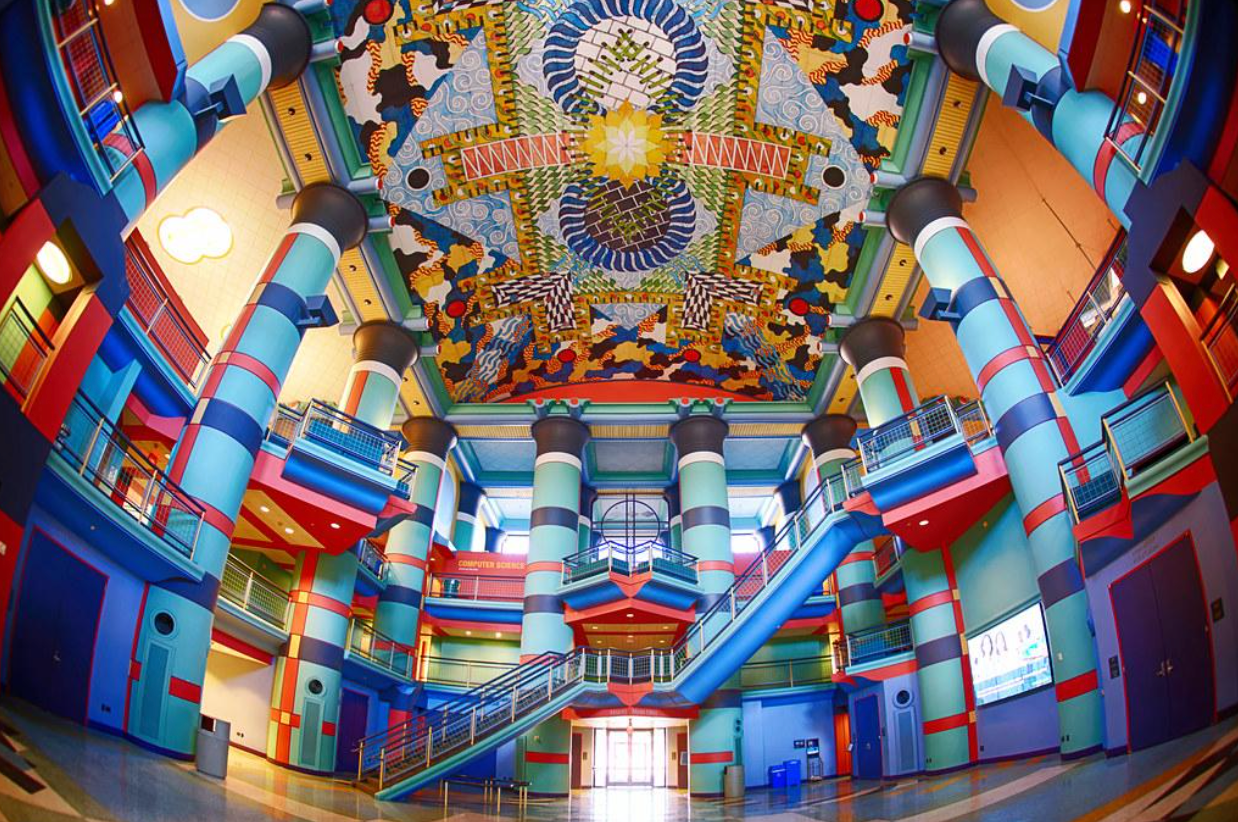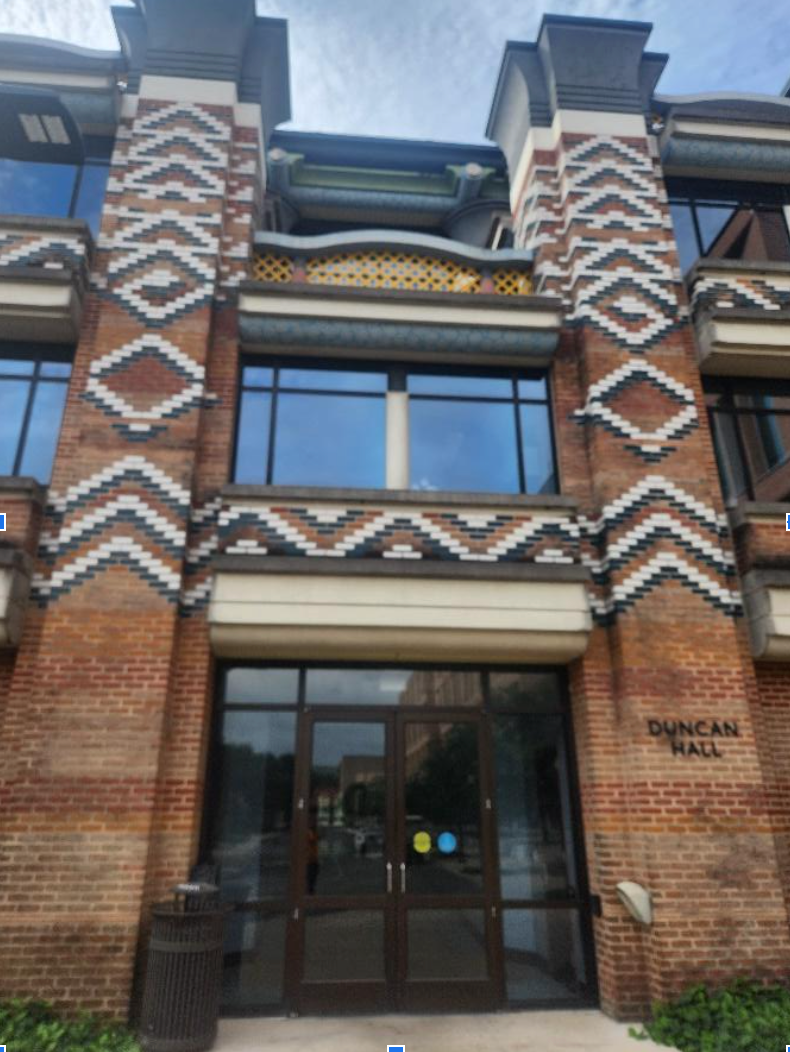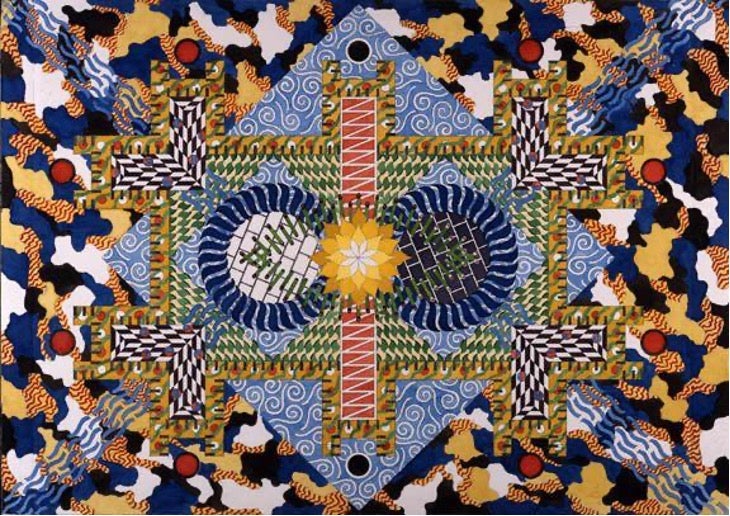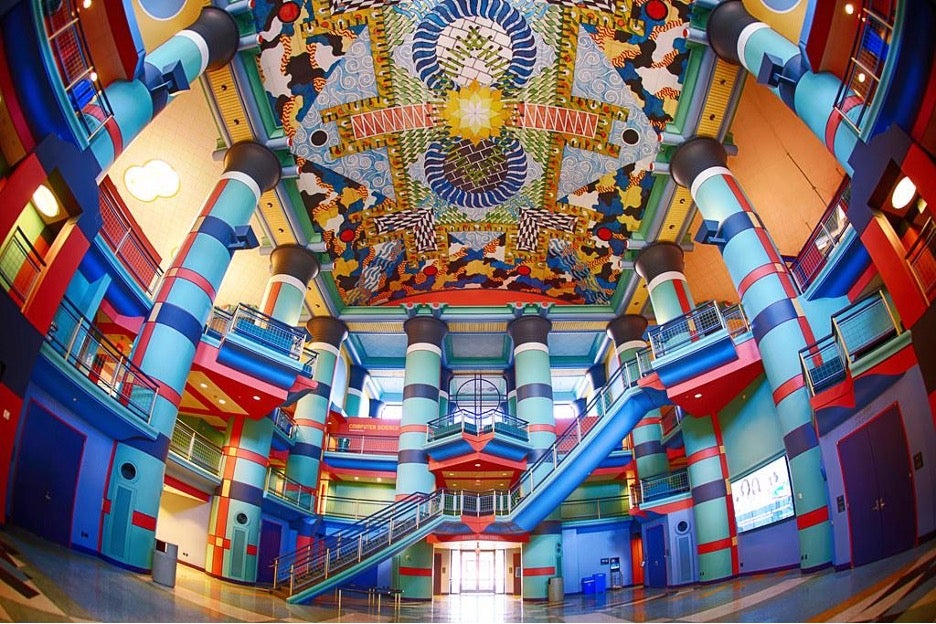Photo by Jay Lee (https://www.flickr.com/photos/baldheretic/39640730122)
On a campus dominated by classical arches and Mediterranean brickwork, Duncan Hall stands out like a dream half-remembered. Located at the east end of Rice University’s academic quad, this striking structure is home to the university’s Computational and Applied Mathematics, Computer Science, Electrical and Computer Engineering, and Statistics departments. At first glance, the inside of Duncan Hall may look like a temple transforming you to another world. Its architecture is full of bold, color-rich details, completely distinct from Rice University’s traditionally uniform buildings. But that dramatic contrast is no accident. Designed by British architect John Outram, Duncan Hall was completed in 1996, and it remains one of the most imaginative and intellectually rich buildings on campus to this day.
A Bold New Language of Architecture: Entering the Mind of John Outram
Duncan Hall was designed to reflect the “thinking tools of the modern age”. For John Outram, this meant fusing classical architectural traditions with the logic and aesthetics of computation, science, and ancient symbolism.
The structure is arranged around a classical hypostyle grid, a regular spacing of columns that creates harmony and rhythm. These columns are not just decorative: they also cleverly house utilities like power, telecommunications, and water. This integration of function within a symbolically loaded form is a signature feature of Outram’s work.

Photo by Jay Lee (https://www.flickr.com/photos/baldheretic/39640730122)
Outside, the colored bricks are more than aesthetic. They reference geological strata, reminding us that science, like the Earth, is built in layers. The glazed brick patterns reference ancient civilizations like Mayan, Egyptian and Babylonian, whose understanding of numbers, symbols, and systems shaped the very roots of computational thought.

The Ceiling of Martel Hall: A “Machine for Thinking”
At the heart of Duncan Hall lies Martel Hall, a vast, light-filled atrium framed by thick columns and geometric designs. But it’s the ceiling that stops people in their tracks.

Designed by John Outram himself, the ceiling mosaic is not a traditional mosaic made of tiles, but rather a massive, digitally printed artwork that spans the entire space. Outram didn’t call it “art.” He referred to it as a "machine for thinking", a cognitive device meant to stimulate reflection, imagination, and interdisciplinary understanding. This mosaic is a visual communion between cosmic geometry, symbolic storytelling, and subtle “easter eggs”. Outram condensed his vision onto a single A1-sized drawing. The process of turning it into a 232-panel, full-ceiling installation is a story of both creativity and technology:
- Entire design was drawn and colored by Outram on a single sheet of paper
- Scanned at 1200 dpi to produce a 750 MB image file
- Enlarged into 232 panels, each 2x8 feet
- Printed on perforated vinyl using a 12 dpi Scanachrome printer
- Mounted onto curved acoustic tiles and attached to a steel grid
This masterpiece is not just visually stunning, the design is fully modular and functional, combining aesthetics with sound management and lighting accommodation. Incredibly enough, the entire ceiling was installed in just two days. Besides the appealing aesthetic, there are tons of symbolism and representations at full display. Every quadrant, color, and spiral speak to the structure of thought, civilization, and computation:
The Center
- At the heart lies a spiral, which represents:
- Recursion and self-reference
- Growth and expansion
- The passage from ancient to digital knowledge
The Surrounding Forms
- Encircling the spiral are abstract shapes resembling:
- Microchips and circuit paths: a nod to the building’s purpose
- Cosmological diagrams: symbols of myth, time, and order
- Geometric and architectural patterns: referencing classical temples, sacred geometry, and the ordering of the universe
The Four Quadrants (up for interpretation)
Though not labeled, the ceiling seems to be divided into four conceptual realms:
- Science & Computation: With visual metaphors for data, structure, logic
- Philosophy & Myth: Echoes of archetypes, religious architecture, ancient scrolls
- Mathematics: Spirals, symmetry, recursive structures, and symbolic ratios
- Human Culture & Time: References to ancient civilizations, astrology, and digital age iconography
Duncan Hall isn’t just a building, it’s an experience. Its bold colors, layered symbols, and that unforgettable ceiling in Martel Hall invite you to slow down, look up, and ask questions.
Whether you're a science student rushing to class or just someone curious about hidden meanings in architecture, there’s something here for you. Outram didn’t design a space to give you answers, he designed one to make you think. I hope this blog has given you some new info about this iconic building and that next time you’re on campus, step inside, stand under the mosaic, and see what you find. You might just walk away with a new way of seeing not just the ceiling, but the world.
About the author:
Manuel Carmona Pichardo is from Pachuca Hidalgo, Mexico and is a current Ph.D. student in Chemistry. He got his B.S. in Chemistry at Universidad Autónoma del Estado de Hidalgo in 2016 and his MSc in Chemistry from Cologne University in Cologne Germany. Read more.
Further Reading:
Rice and Seek: A Quest for Rice’s Hidden Symbols
The Elusive Baker Hall: What is Rice’s Premier Policy Institute & Think Tank?
Remembering the Philippine People Power: A Night of History, Community, and Sustainability

